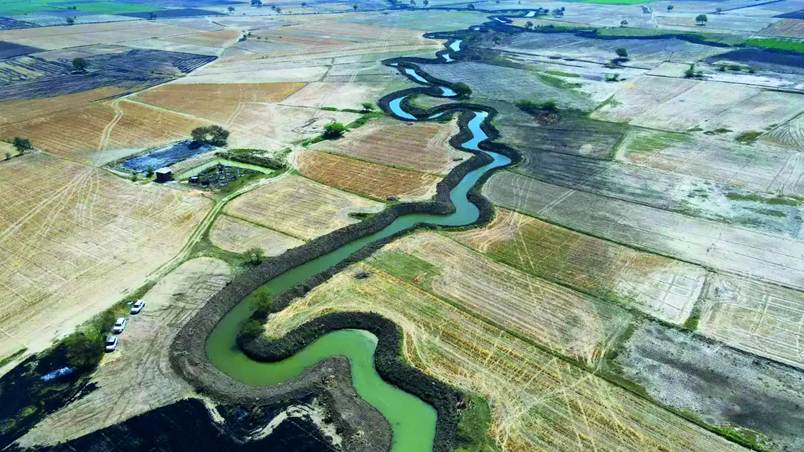Context & Background
- The Noon river in Kanpur district had become indistinguishable due to infestation of jal kumbhi (water hyacinth) and siltation from debris and blocked channels.
- Reviving the Noon is part of a state-wide river rejuvenation mission launched in June 2024 at the Saryu Mahotsav, with the motto: “One district, one river”.
- Uttar Pradesh has identified over 60 forgotten rivers to be revived—each district assigned one.
Relevance : GS 1(Geography) ,GS 3(Environment and Ecology)

Geographical Details
- Length of Noon River: 48.5 km
- Coverage: Flows through 34 gram panchayats across 3 blocks—Shivrajpur, Chaubeypur, and Bilhaur.
- Origin: Kanhiya Khera in Rampur Narua
- Endpoint: Ganges river
- Area Surveyed: Nearly 24 km of natural path mapped and cleared.
Key Interventions
- Drone Mapping & GIS:
- Remote sensing used by Remote Sensing Centre (Lucknow) to detect dry patches, channel blocks, and water hyacinth zones.
- Entire stretch digitally mapped for revival planning.
- Community Participation:
- Awareness slogans like “Hum sabne milkay than lia, Noon nadi ko fir se jeevant karana hai” helped mobilize women and villagers.
- Villagers contributed shramdaan (voluntary labor) and input for tracing natural channels.
- Multi-departmental Coordination:
- Officials from 10 departments (forest, agriculture, irrigation, horticulture, fisheries, etc.) coordinated under district administration.
- Employment Generation:
- Works carried out under MGNREGA, creating local employment while reviving ecology.
Outcomes & Impact
- Hydrological Restoration:
- Removal of hyacinth and clearing of silt restored water flow in large sections.
- Monsoon overflow now properly channels into Noon, rather than damaging nearby fields.
- Agricultural Benefits:
- Fields previously waterlogged or left uncultivated have regained productivity.
- Cost Efficiency:
- Revival used minimal external funding, relying largely on community labor and existing government schemes (e.g., MGNREGA).
Challenges Faced
- Resistance from Locals:
- Convincing farmers and landowners was difficult due to past failures.
- Required strong leadership by gram panchayat officials and continuous dialogue.
- Ecological Degradation:
- Old jal kumbhi infestation (over 10 years) had choked many sections.
Replicability & Model Value
- Model can be scaled to:
- Other degraded non-perennial rivers and rivulets in the Indo-Gangetic belt.
- Similar efforts in Bundelkhand and eastern UP facing groundwater distress.
- Combines:
- Tech-driven mapping
- Employment-linked public works
- Decentralized governance
- Community-led planning
Way Forward
- Institutionalize “One District, One River” under a mission-mode program.
- Create a real-time monitoring dashboard using drone & GIS tools.
- Launch eco-literacy campaigns for aquatic weed control & water stewardship.
- Link river rejuvenation with crop planning and irrigation strategy.
- Integrate with Namami Gange for rivers feeding into the Ganga.



